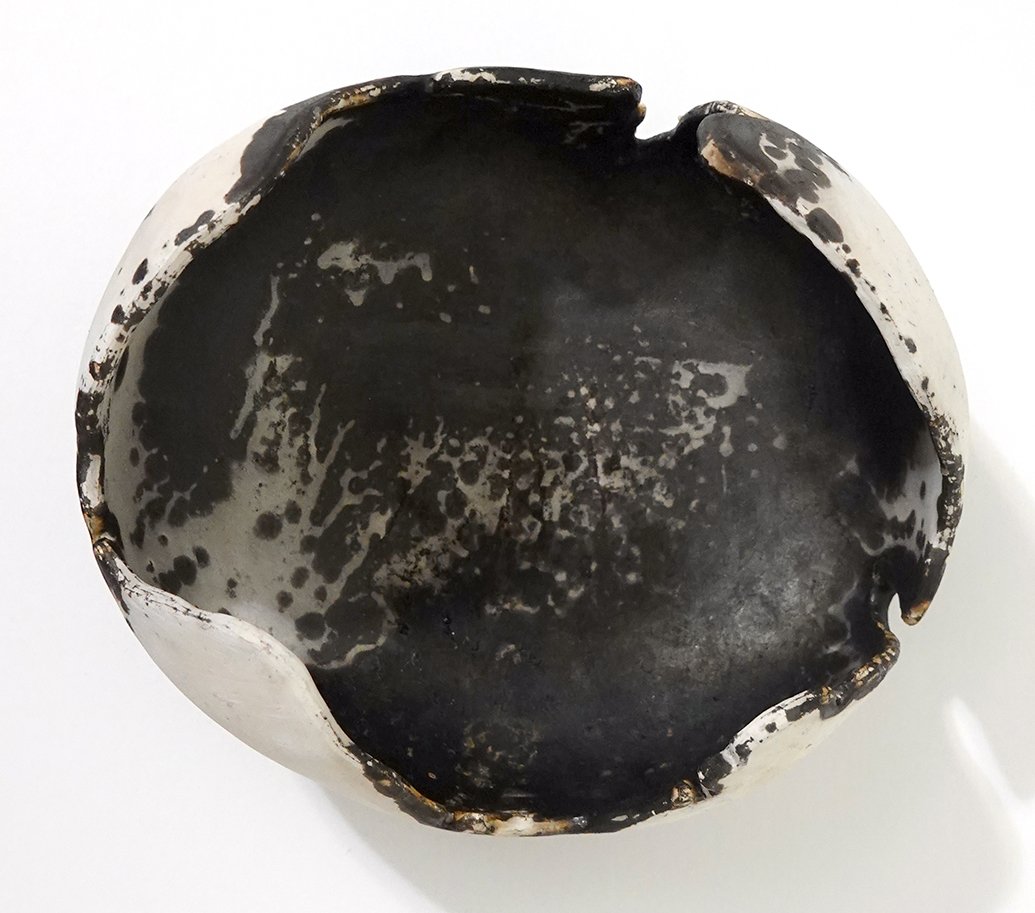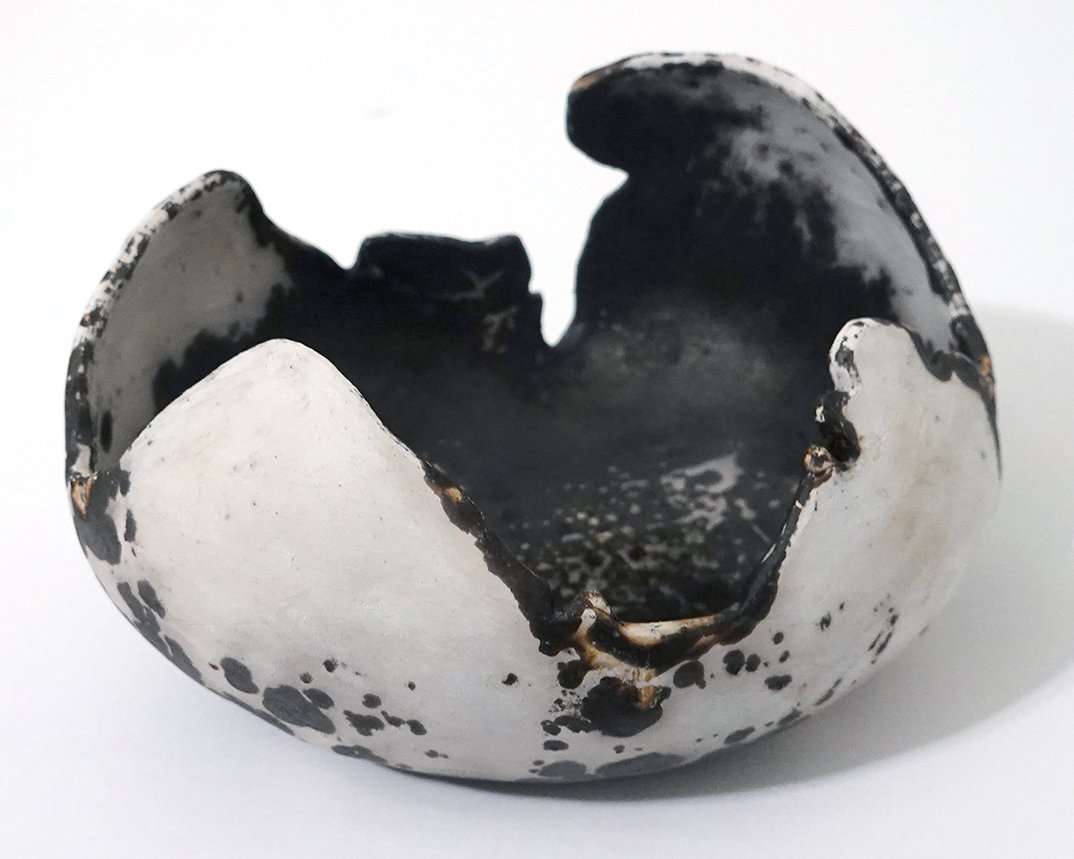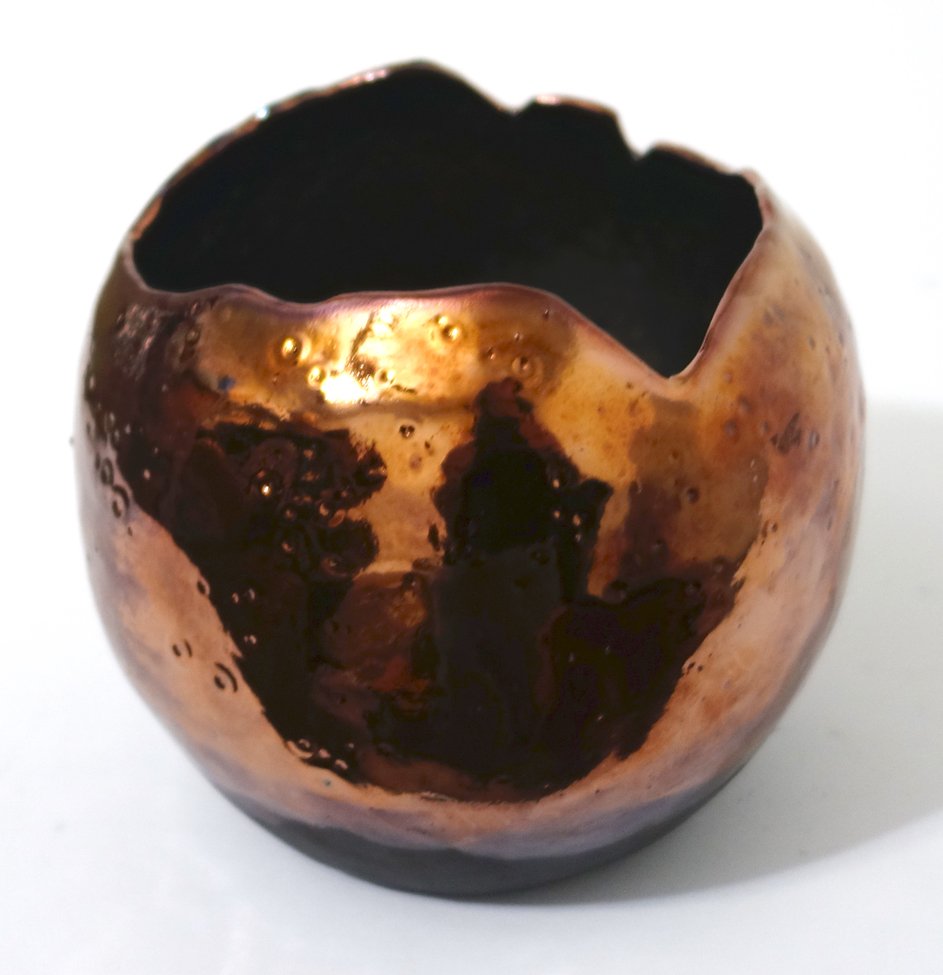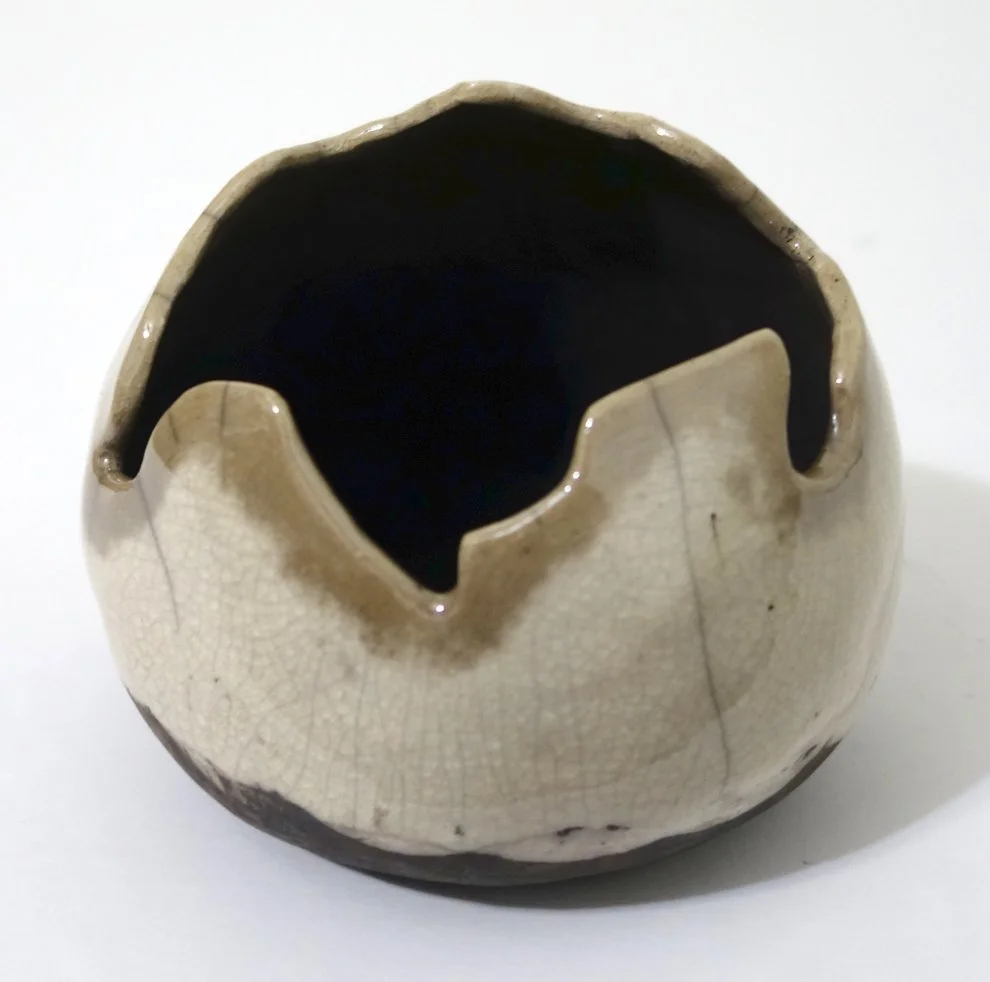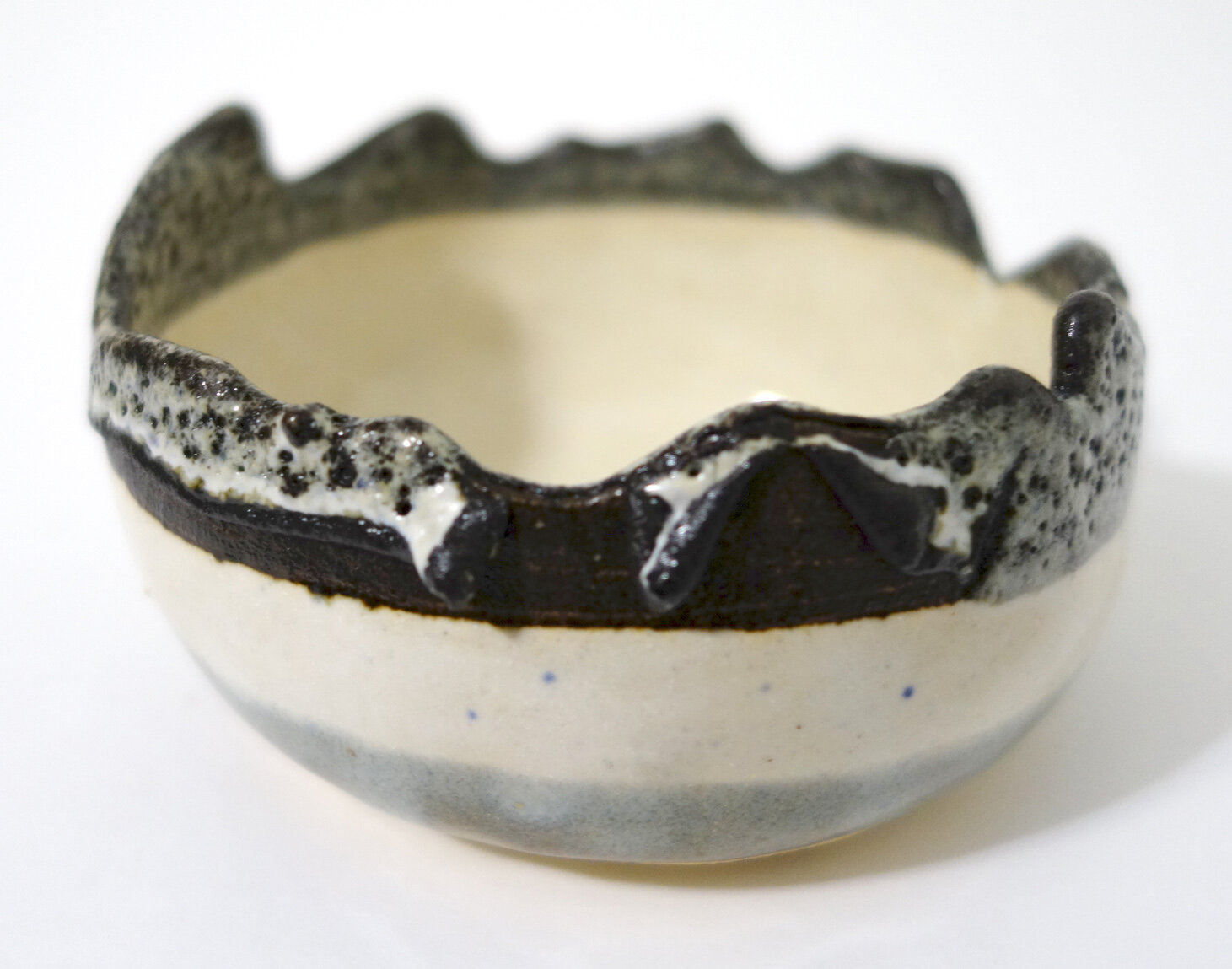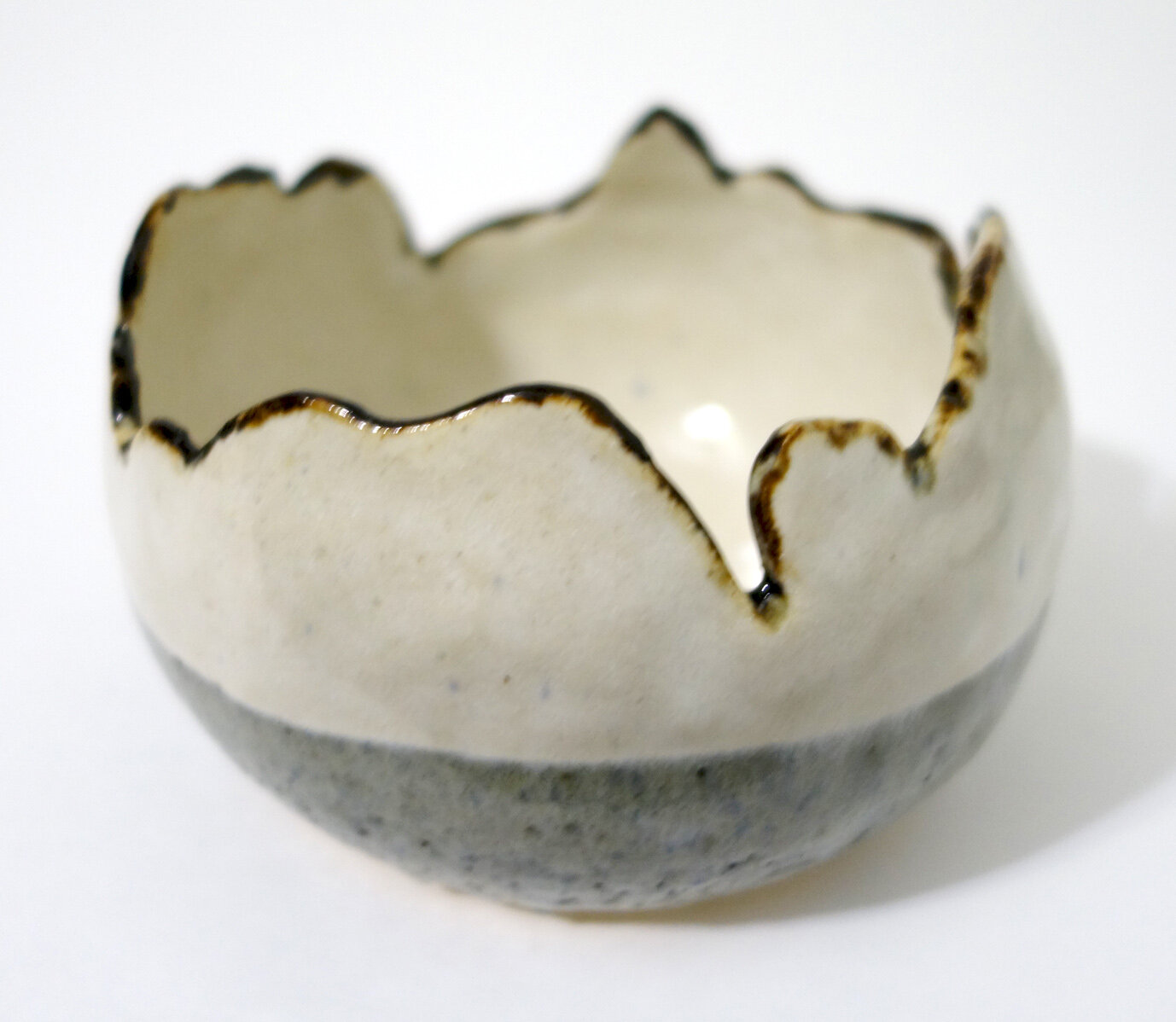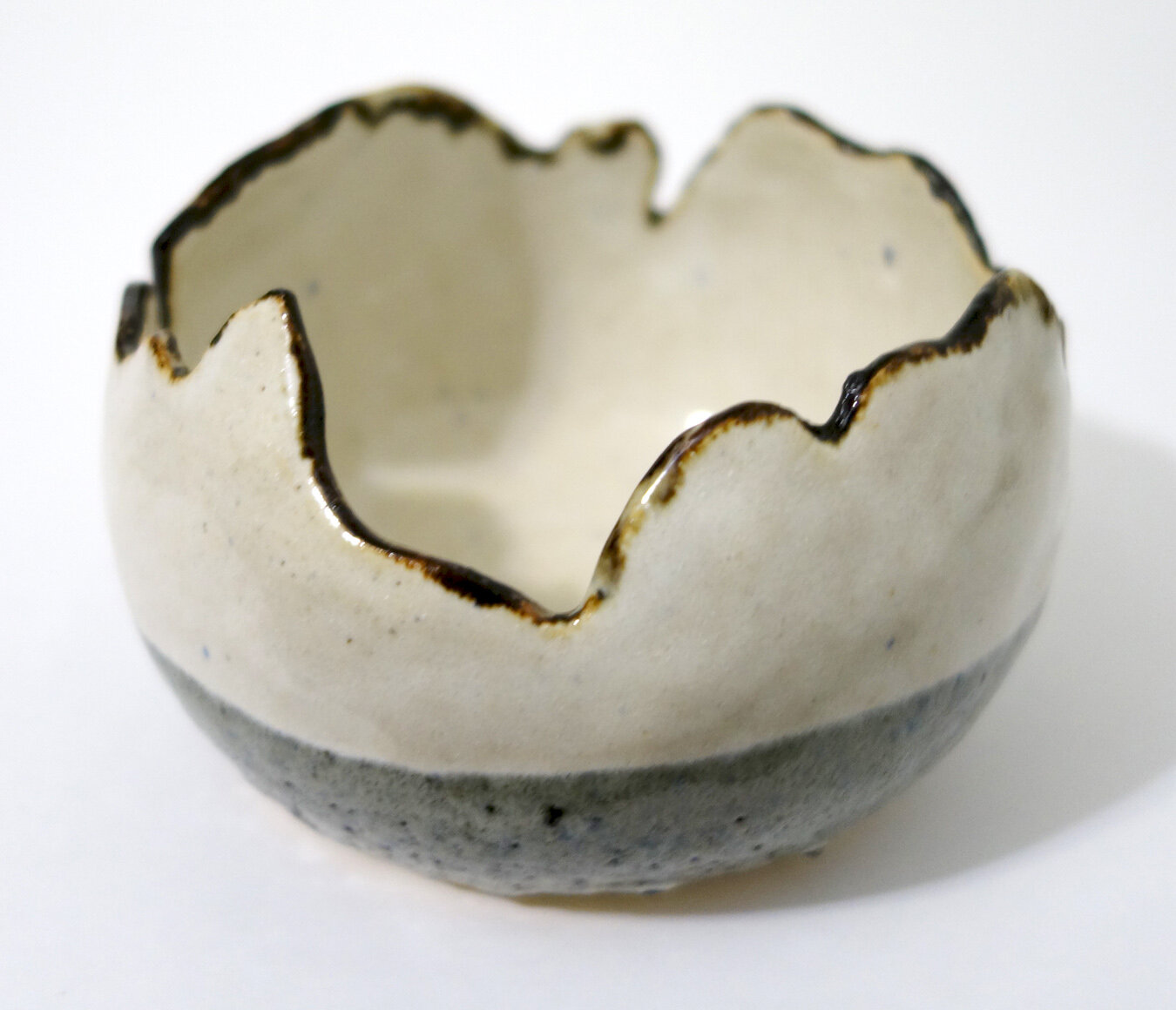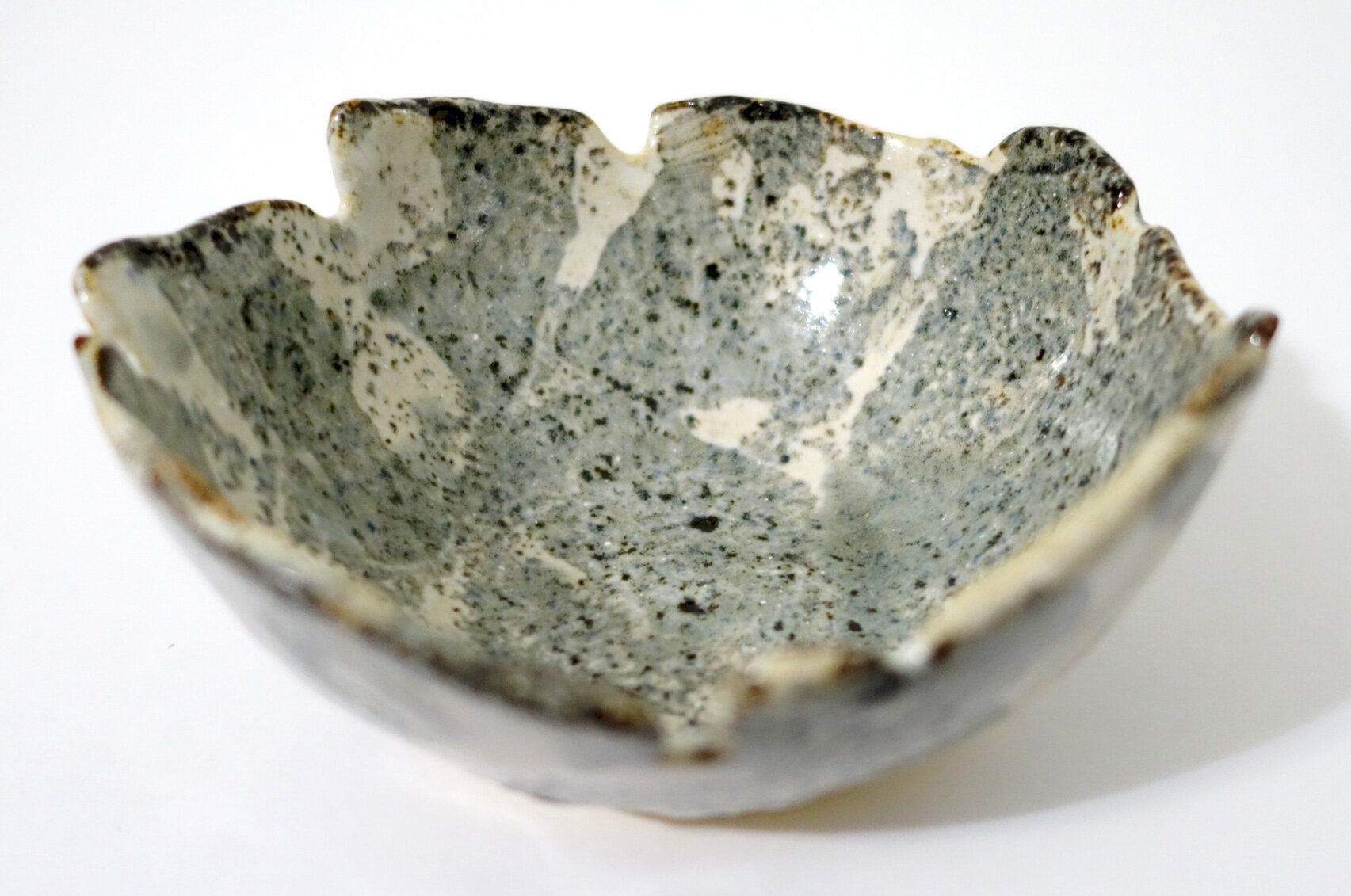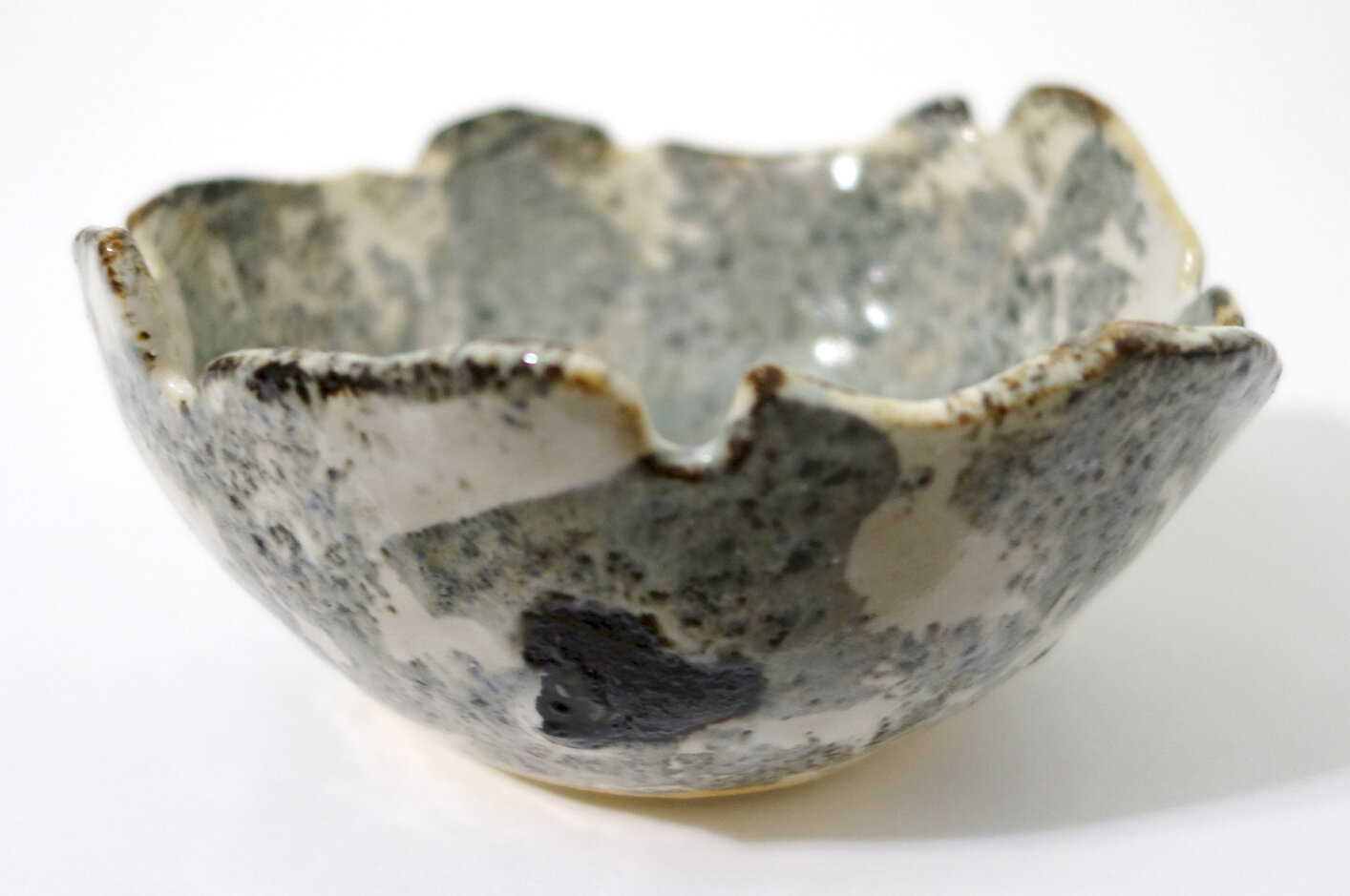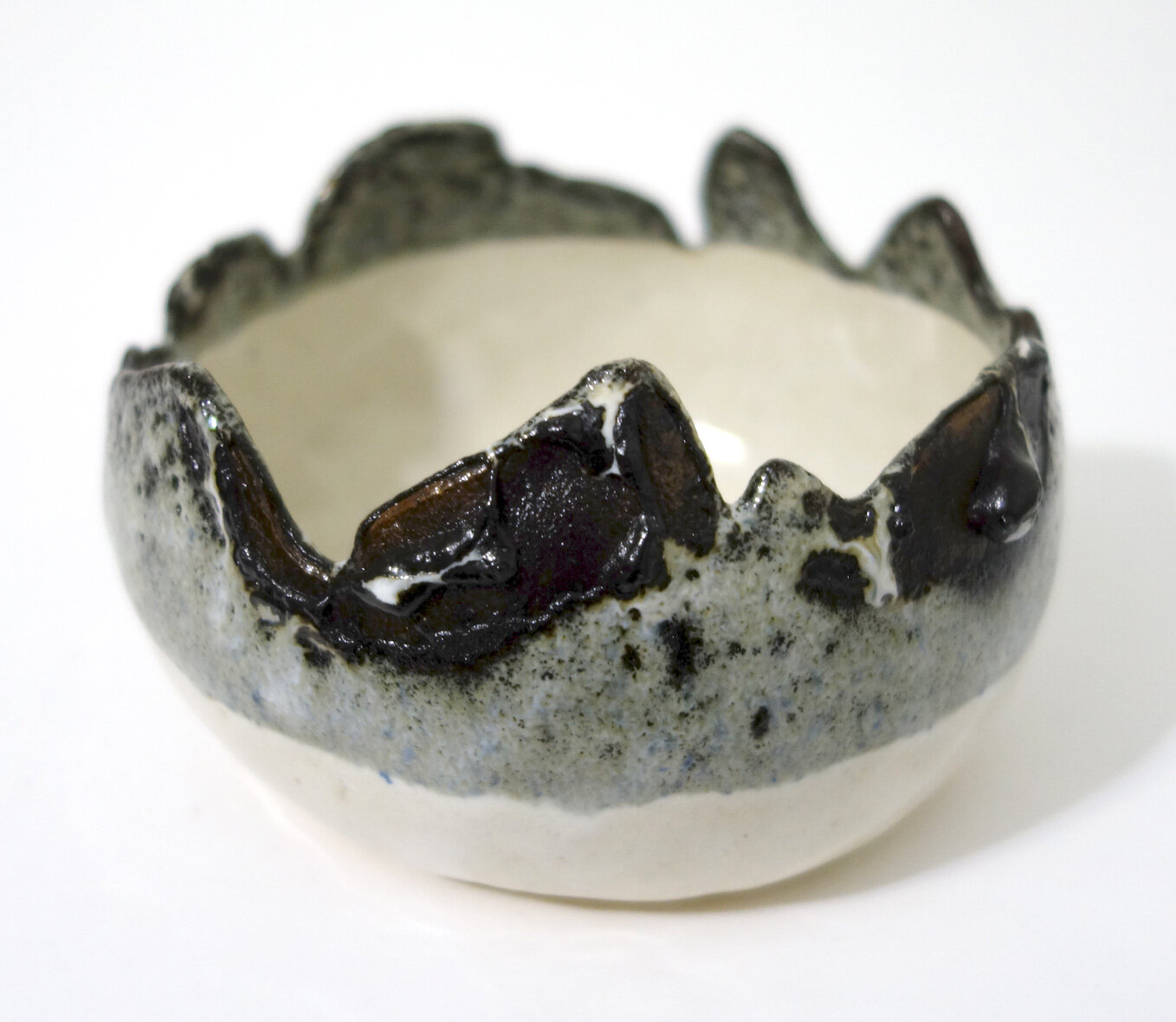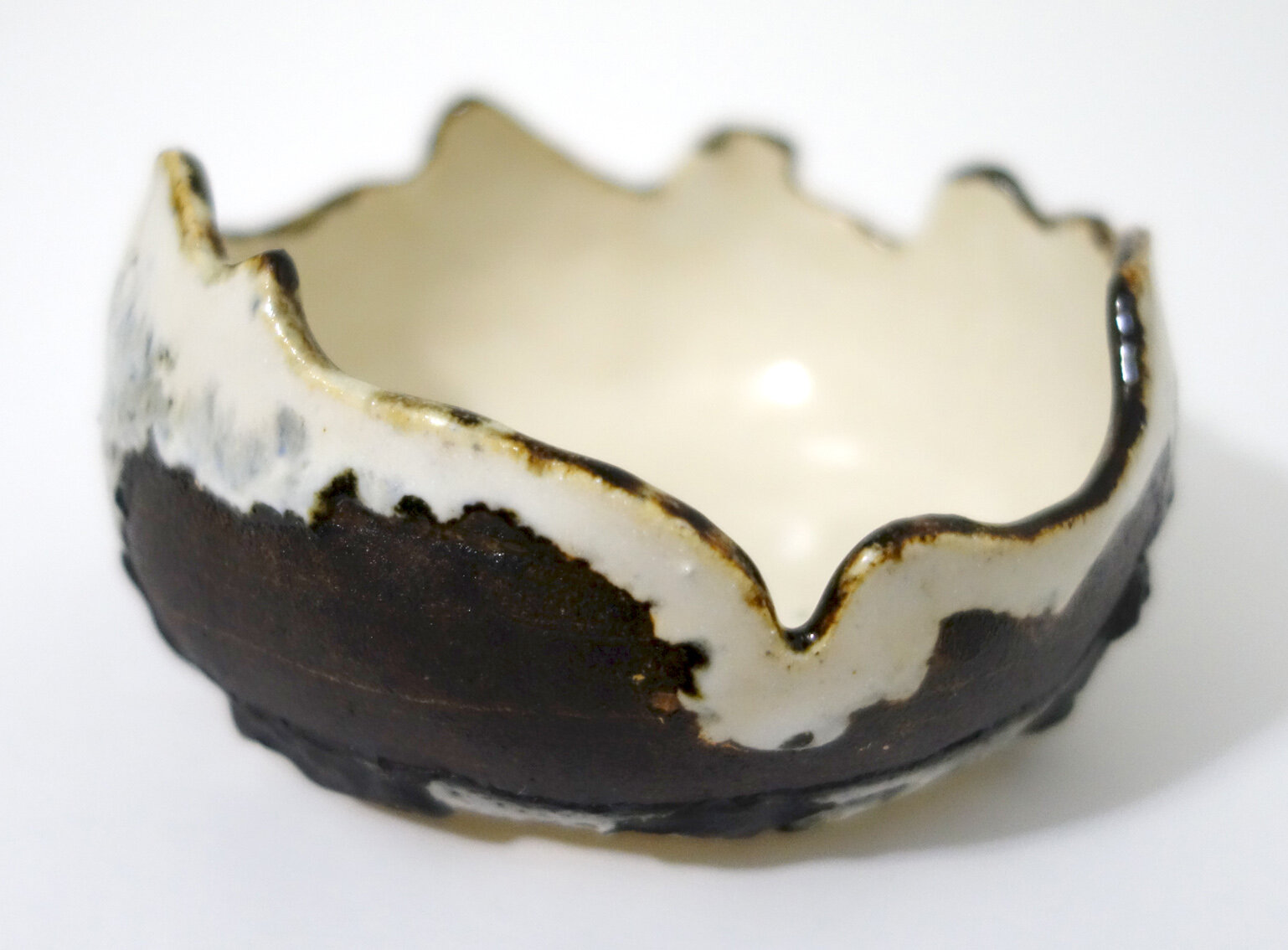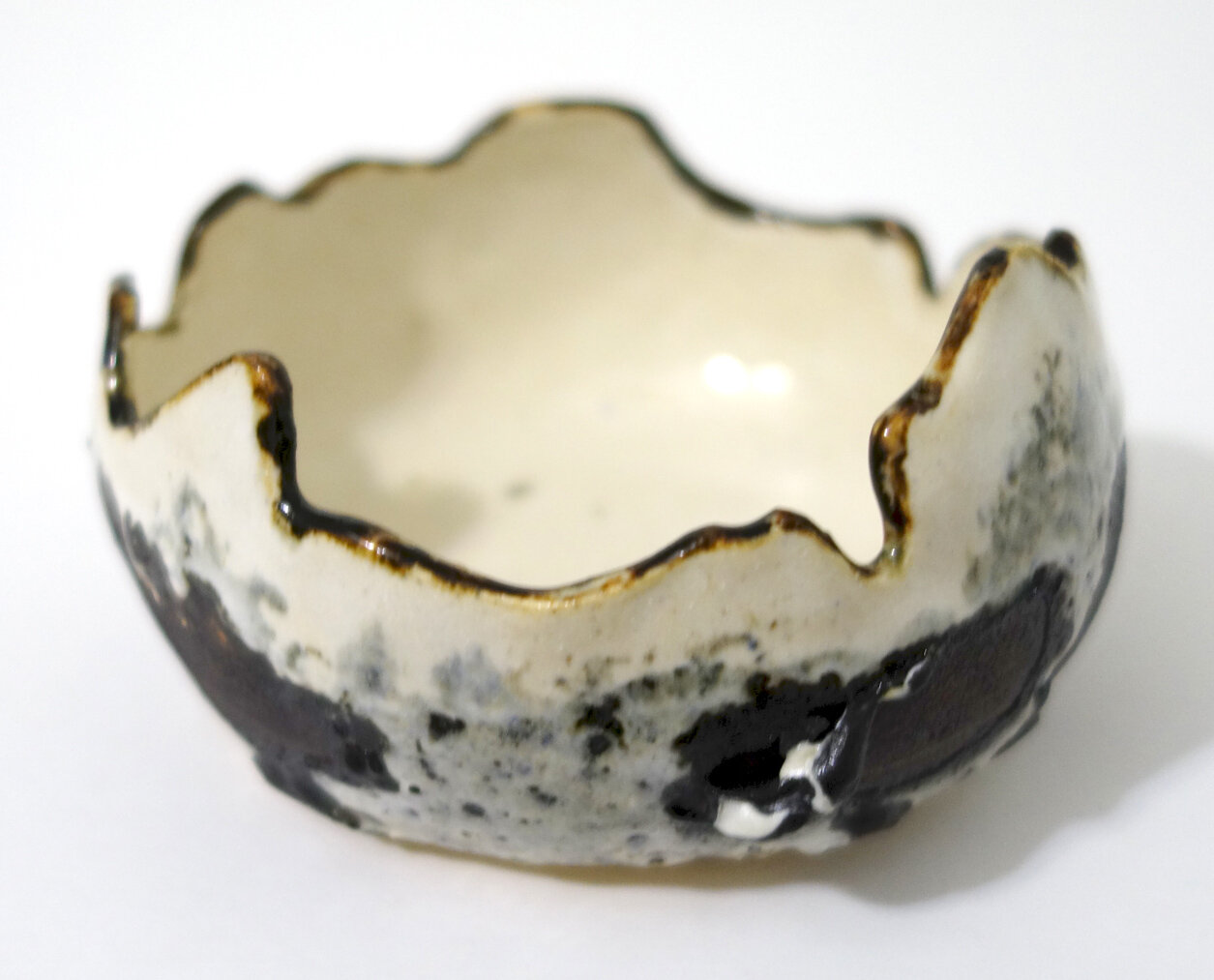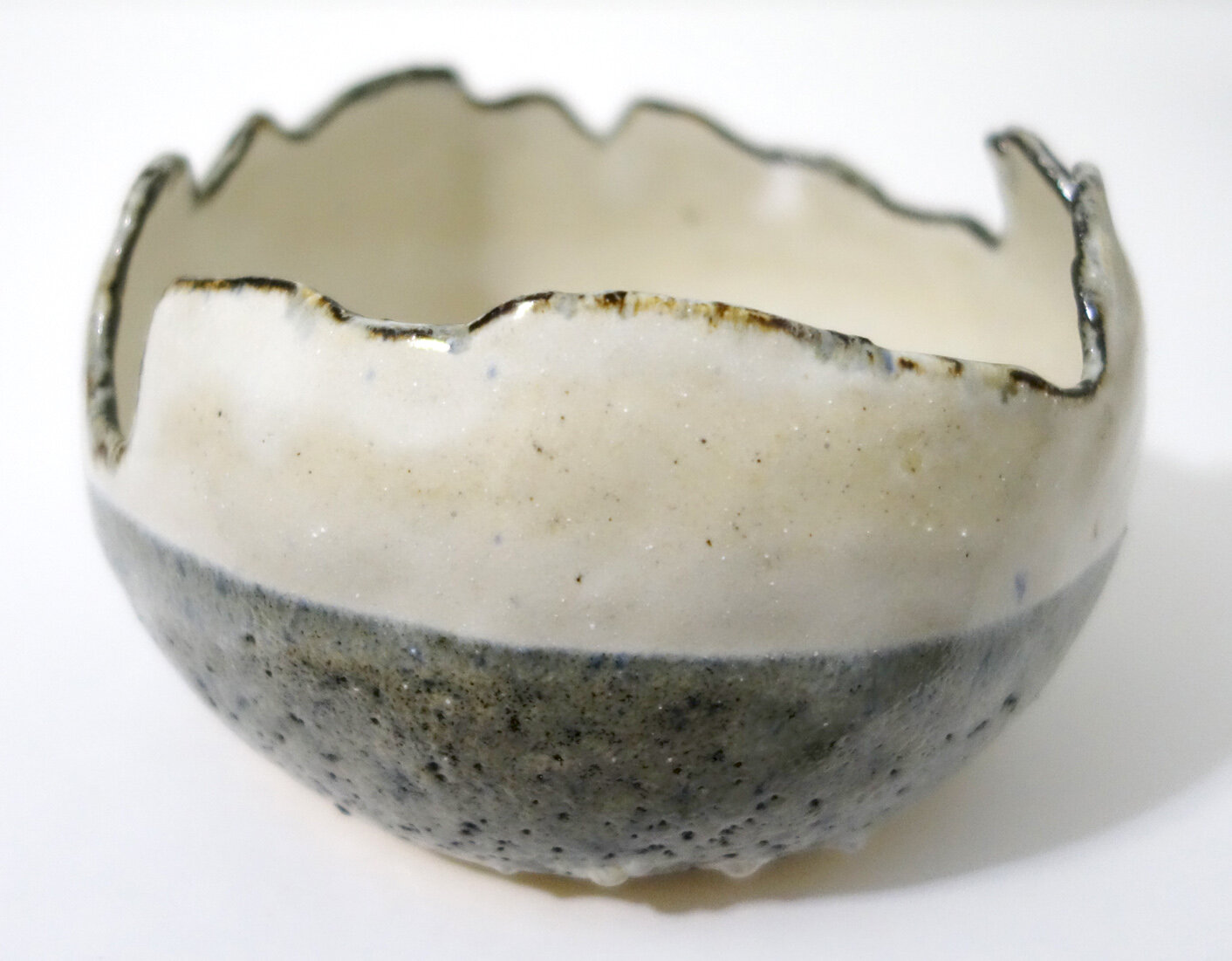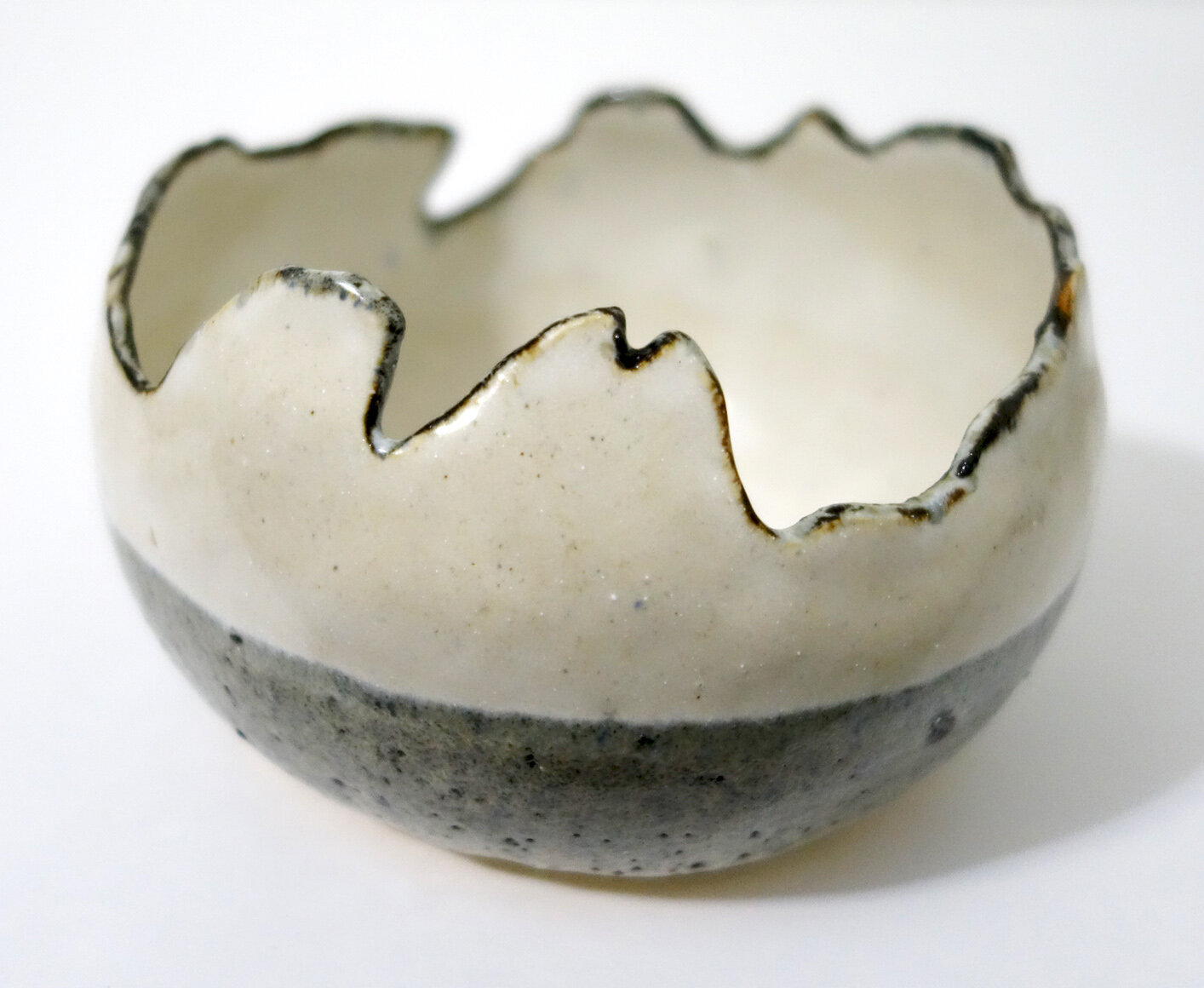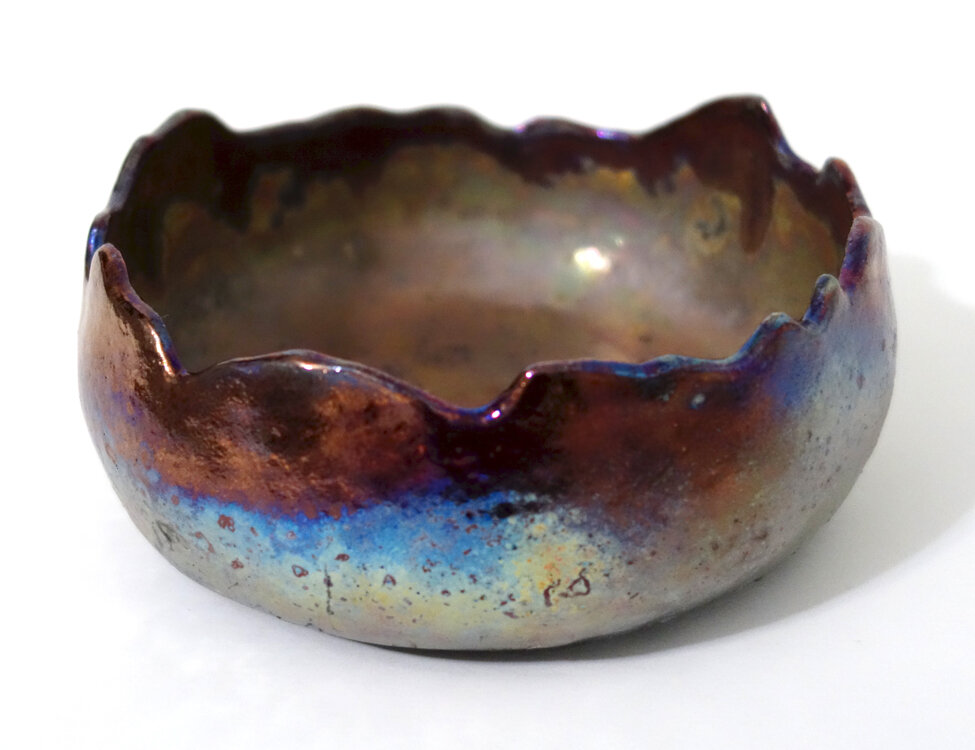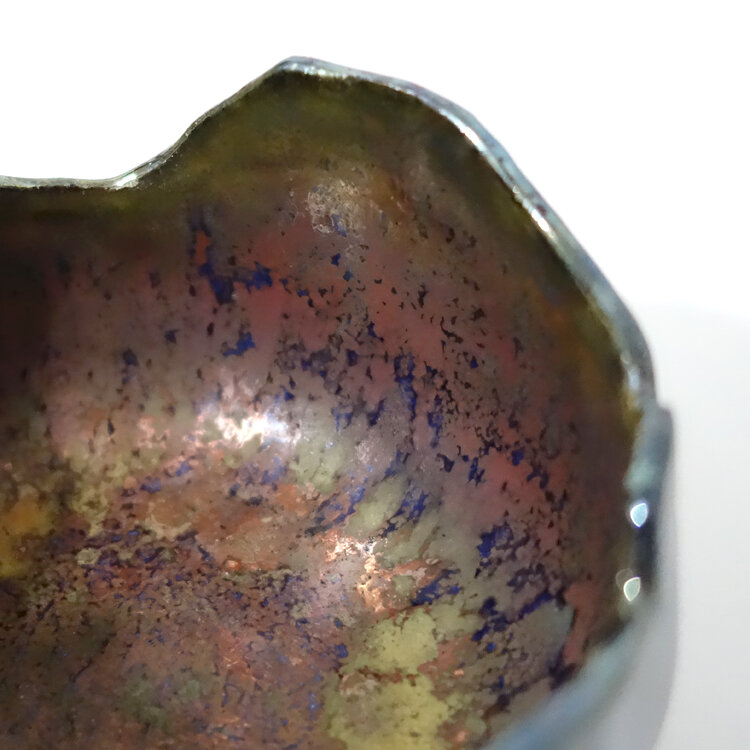Here is the first batch of my obvara raku pieces from my Dakota Potters Supply workshop on October 21, 2023 - I made enough that I plan to publish three posts covering the artwork! This post shares my obvara bowls and bowl-like vessels.
Again, as background, obvara is a low-fire scalding-and-sealing process wherein you create a fermented sourdough/beer bath, plunge approximately 980°C naked ceramics fresh out of the kiln into it, wait for them to start to bloom with different tan-to-brown markings, and then arrest the surface carbonization process by rinsing the pieces off in a water bath.
The obvara process itself scalds and somewhat seals the surface of the pottery, but I went ahead and added a thin layer of kitchen wax to these pieces as well for extra protection and sheen unification. All of the below images in each gallery row are of the same artwork from different angles.
This first open bowl has a burnished-smooth surface!
This second piece is another open bowl, but this time the surface has some light texture as well as a more variable form.
This third piece is burnished smooth and a bit more closed, though there’s a quite variable lip. All of the pieces I’ll be showing you are handbuilt, pinch-pot designs.
Next we have another burnished and even more closed vessel! This one was a favorite of my fellow workshop attendees; they loved how the obvara surface turned out.
While you can click into each of the above images to see them larger, I want to close this post out with just one large image of the last burnished bowl I made!








